Choosing the right size for your classic wedding band can be tricky. Did you know that nearly 30% of people end up with the wrong size after their wedding? In this guide, I’ll explain how to measure your finger accurately, understand band width, and identify factors that affect your wedding band size. By the end, you’ll know how to select the perfect classic wedding band in silver or any metal. This will save you time and money, ensuring your ring fits comfortably and looks great on your special day.
Key Takeaways
- Choosing the right ring size ensures comfort and avoids potential damage or loss
- Measuring at different times of day helps account for natural finger swelling
- Understanding international sizing standards prevents confusion when selecting wedding bands
- Band width impacts comfort, requiring adjustments in size for different styles
- Professional resizing is crucial to maintain the integrity of your wedding band over time
Introduction to Classic Wedding Band Sizes
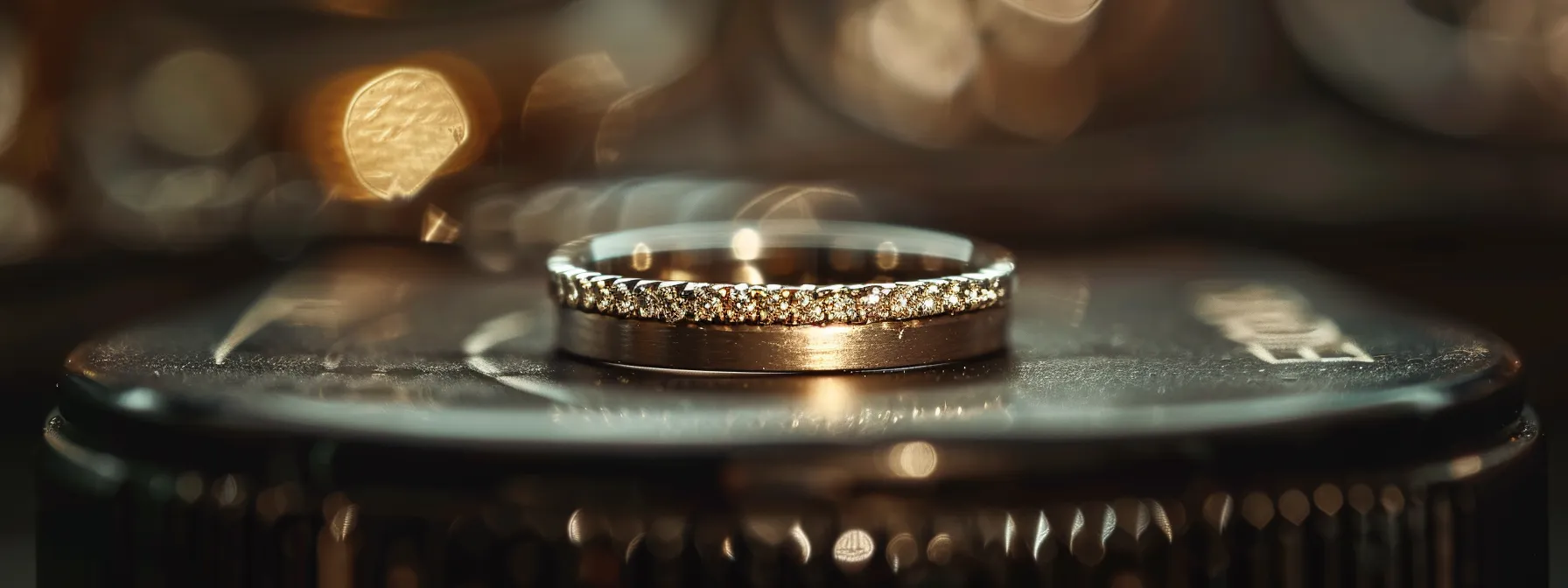
Choosing the right ring size is crucial for comfort and style, especially when it comes to classic mens wedding bands. I'll explain common sizing standards around the world, along with how accurate measurement can ensure your precious metal ring fits perfectly on your ring finger. This guide will assist you in making informed decisions about sizing, engraving options, and overall length.
Importance of Choosing the Right Ring Size
Getting the right ring size is more important than many people realize. A wedding band that is too tight can cause discomfort or even risk damaging the ring, especially if it’s made from sturdy materials like tungsten or alloy. Conversely, if the ring is too loose, it may slip off and get lost, which can be a heart-wrenching experience. Selecting the appropriate size from the start ensures your wedding band remains a comfortable and cherished symbol of your commitment for years to come.
Additionally, proper sizing allows for potential future alterations, like engraving or adding rhodium plating for extra shine. A well-fitted wedding band fits seamlessly into your daily life, enhancing your style without constant adjustment. By measuring your ring size accurately, you can confidently choose a wedding band that not only fits well but also reflects your personal taste and lifestyle:
- Consider your comfort when selecting a material like tungsten or rhodium.
- Understand the adjustable nature of some rings and how that impacts sizing.
- Know that sizing can vary between different types of metals and designs.
Common Sizing Standards Around the World
When it comes to wedding bands, understanding international sizing standards is essential for a perfect fit. In the United States, we typically use a numerical scale from 1 to 16, measuring in half sizes, which accommodates a range of finger sizes. In contrast, countries like the UK utilize a lettered system, where sizes are designated from A to Z. This difference can lead to confusion, especially when couples are considering a titanium ring or any other metal for their marriage. I always recommend checking conversion charts or consulting with a jeweler to ensure that your preference aligns with global sizing norms.
Different regions also take unique approaches to measuring finger sizes, impacting how gemstones are set and the overall design of the ring. For example, European countries use the circumference of the finger in millimeters, making it vital for buyers to understand these variations to avoid any errors in sizing. Being aware of these standards not only helps in selecting the right size but also allows for future modifications, such as changing a gemstone or adjusting the band. Taking the time to grasp these differences can ultimately save you from the discomfort of wearing a poorly fitted ring and helps maintain the integrity of your special piece.
Knowing the right size for a classic wedding band is crucial. Next, I’ll show you how to measure your finger accurately to ensure a perfect fit.
How to Measure Your Finger for a Classic Wedding Band
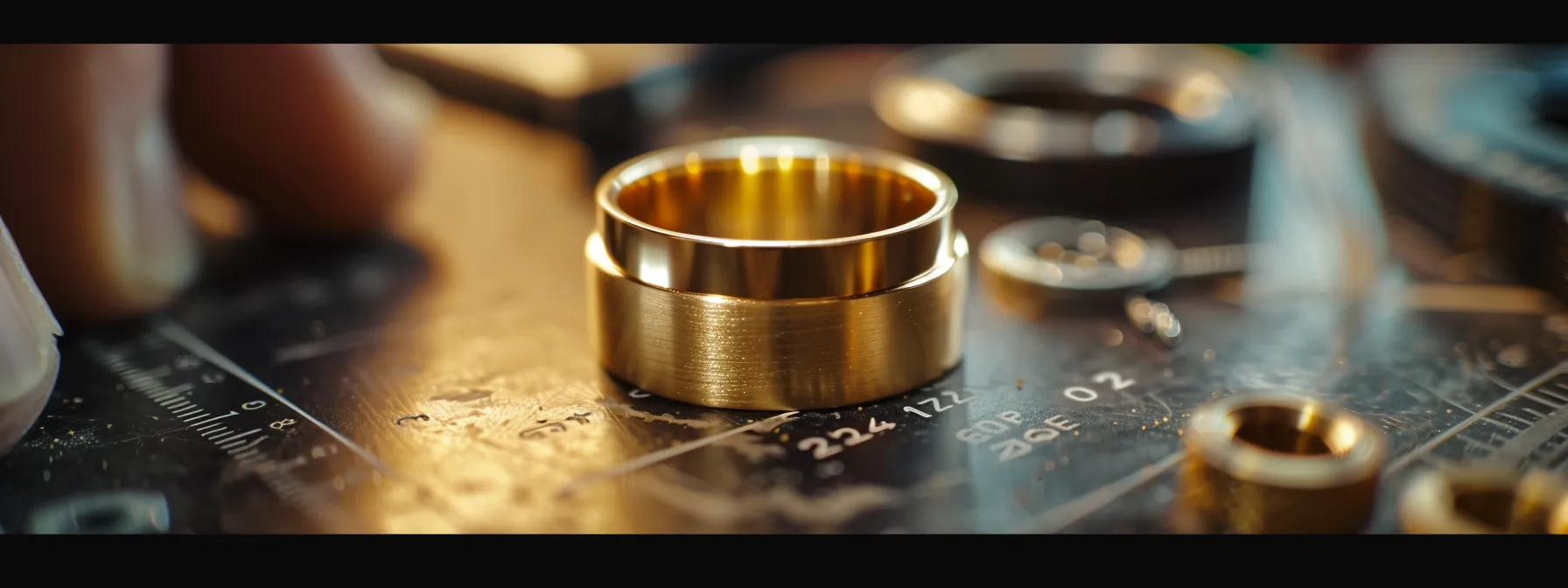
To ensure your classic wedding band fits flawlessly, knowing how to measure your finger is vital. I’ll share the tools you need for accurate measurement, provide a step-by-step guide to measuring at home, and discuss professional sizing services available. These insights will help you select the right band, considering aspects like weight and dome design, whether you’re drawn to gold or platinum materials.
Tools Needed for Accurate Measurement
To measure your finger accurately, you'll need a few essential tools. A flexible measuring tape is ideal; it comfortably wraps around your finger to capture its true diameter. If you don’t have a measuring tape on hand, a piece of string can work in a pinch. Wrap it around your finger, mark the point where it overlaps, and then measure the length with a ruler for a precise size. Understanding this measurement is crucial, especially when considering different materials like titanium, which may feel different on your hand compared to gold or platinum.
Another helpful tool is a ring sizer, which you can often find online or at local jewelry stores. This device allows you to find the exact size needed for your classic wedding band. Trying on various width options can also help you gauge comfort, as wider bands can feel tighter than their thinner counterparts. Being diligent in this process ensures that both brides and grooms can confidently wear their wedding bands without discomfort or worry about losing a valuable piece of jewelry.
Step-by-Step Guide to Measuring at Home
To get started, find a flexible measuring tape or a piece of string that can comfortably wrap around your finger. If using string, make sure to mark where the string overlaps, then measure that length with a ruler to determine your finger size accurately. This method is particularly useful when considering classic men’s wedding bands, as different materials, like copper or titanium, can fit differently on your hand.
Next, I recommend measuring your finger at different times of the day, as swelling can affect your size. For instance, if you’re planning an eternity ring for your wedding anniversary, taking measurements in the morning and evening can help you get a true fit. Remember, the perfect classic wedding band should feel comfortable and secure, allowing you to enjoy this symbol of commitment without the worry of it slipping off or feeling too tight.
Professional Sizing Services Explained
When it comes to finding the perfect size for your classic wedding band, professional sizing services can be incredibly beneficial. Jewelers have specialized tools and experience to measure your finger accurately, ensuring you receive a wonderfully fitting ring. They can also provide insights into how different metals and styles might affect your sizing, assuring that your choice aligns with your personal comfort and aesthetic preferences.
If you're uncertain about measuring on your own, I recommend visiting a local jewelry store for a professional sizing. This is especially important if you're considering wider bands or unique designs, as these factors can impact your fit. Professionals not only take precise measurements but can also assist you with adjustments or changes in size later on, which is vital for maintaining the integrity of your ring over time. Here's a quick summary of steps to consider when utilizing sizing services:
- Schedule a visit to a local jeweler.
- Ask for a professional measurement of your finger.
- Discuss options for different ring materials and designs.
- Explore potential resizing services for the future.
Now that you've measured your finger, it's time to consider how the width of your band affects its comfort. A ring's size may be right, but its width can change everything about how it feels on your hand.
Understanding Band Width and Its Impact on Fit
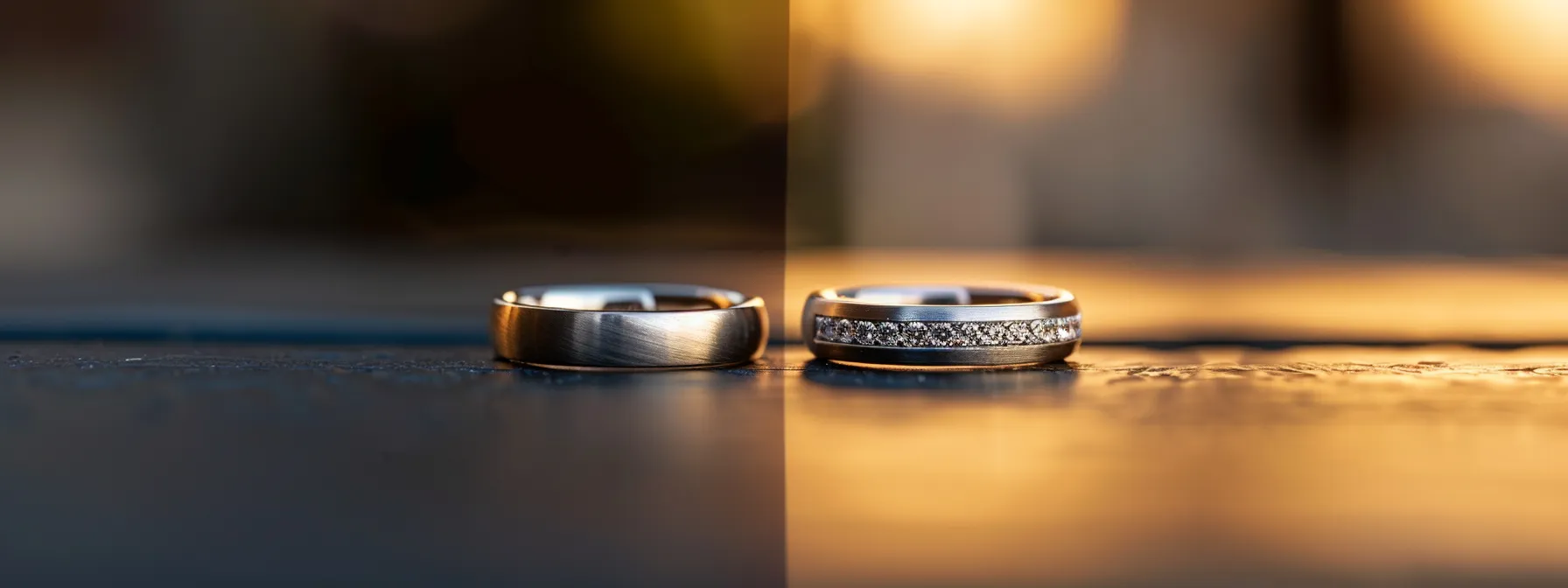
Understanding Band Width and Its Impact on Fit
Band width plays a significant role in determining how comfortable and secure your classic wedding band will feel. In this section, I'll compare narrow and wide bands, discussing how each width affects fit and overall comfort. Understanding these factors ensures you select a band that fits your lifestyle and personal style preferences perfectly.
Comparing Narrow and Wide Bands
Narrow wedding bands typically range from 2mm to 4mm in width, which makes them a popular choice for those who prefer a minimalist look. Personally, I find that these bands can be quite comfortable, especially for individuals with smaller fingers, as they tend to feel less bulky and allow for more natural hand movement. However, it’s important to ensure that a narrower band still provides the necessary durability, particularly if you lead an active lifestyle or choose a harder metal like tungsten.
On the other hand, wide bands, usually measuring 6mm or more, can offer a more substantial presence on the finger. I've noticed that many clients appreciate the bold statement these rings make, especially in metals like gold or titanium. Yet, be mindful that wider bands may require a slightly larger ring size, due to the way they sit on the finger. It's always best to try on various styles to see how the width feels during everyday activities, ensuring you make a choice that balances both comfort and style.
How Band Width Influences Comfort and Sizing
Band width significantly influences both comfort and sizing, primarily due to how it rests on the finger. For example, a narrower band may feel more comfortable for daily wear, especially for individuals with thinner fingers, as it doesn't take up as much space. However, when it comes to wider bands, they often provide a more substantial feeling but might require a slight adjustment in size to ensure they're not too tight. My experience has shown that trying on different widths can really help determine the right fit for your specific needs.
Moreover, the material of the wedding band also plays a role in how width influences comfort. A titanium band may feel lighter than a wider gold band, despite being the same size. Through my work with clients, I often recommend that they consider their daily activities and how a specific band width will affect their comfort throughout the day. By focusing on these factors, you can better choose a classic wedding band that not only fits well but is also a comfortable and lasting adornment.
Band width can change how a ring feels on your finger, but size isn’t just about width. Let’s explore the other important factors that can affect the fit of your wedding band.
Factors That Affect Your Wedding Band Size
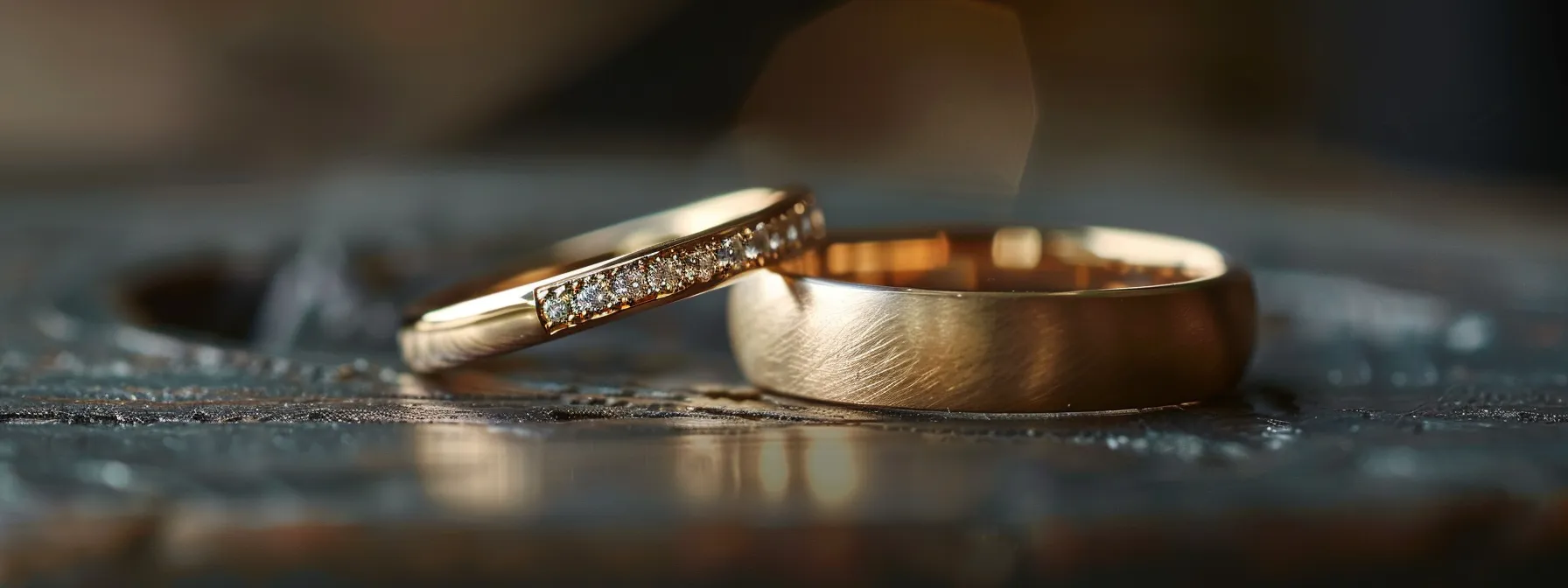
Several factors can influence the size of your classic wedding band. First, finger shape and size variations significantly affect fit; for instance, some people have wider knuckles that may require a different sizing approach. Additionally, seasonal changes can cause fluctuations in finger size due to temperature. Lastly, it's important to match your band size with other rings you wear to ensure comfort and compatibility. These insights will help you make the best choice for your unique situation.
Finger Shape and Size Variations
Finger shape and size variations are vital considerations when determining the perfect fit for your classic wedding band. I've noticed that many individuals have distinct finger shapes, such as tapered or wider knuckles, which can affect how a ring sits and feels on the finger. This means that someone could measure the same size as another person but still require different band sizes due to these anatomical differences.
Additionally, it’s essential to recognize that your finger size can change throughout the day and year, influenced by factors like temperature and hydration. For example, I often advise clients to measure their fingers at different times, especially if they have wider knuckles that may cause the ring to feel tighter. Understanding your finger's unique characteristics can significantly enhance your experience when choosing the right wedding band size:
- Consider your finger shape; are your knuckles wider?
- Measure at different times of day for accuracy.
- Be mindful of seasonal changes that may affect size.
Seasonal Changes and Their Effects on Fit
Seasonal changes can have a significant impact on the fit of your classic wedding band. When temperatures fluctuate, your body responds by expanding or contracting. For instance, I’ve observed that during warmer months, many clients experience swelling in their fingers, leading to a need for a larger size to maintain comfort. Conversely, in colder weather, fingers may shrink slightly, which could make a ring feel looser than usual.
To ensure you're selecting the right size for your wedding band, I recommend measuring your finger at various times throughout both summer and winter. It's essential to take into account how hydration levels and temperature can affect the size and comfort of your ring:
- Measure during warmer months for potential swelling.
- Consider measuring in colder conditions to account for contraction.
- Keep track of how your rings fit during different seasons.
Matching Band Size With Other Rings
Matching your wedding band size with other rings you wear is essential for comfort and practicality. I've often seen individuals struggle with fit when their wedding bands don't sync with their existing rings, especially if one band is wider or bulkier than others. This can create an uncomfortable stacking experience, as different bands can wear against each other, potentially causing irritation or even damage.
To make your selection easier, I suggest trying on your wedding band alongside the rings you typically wear on the same finger. This allows you to gauge how they interact and helps you find a size that complements your overall look. Consider the following tips for matching sizes effectively:
- Try on both rings together to check for comfort.
- Consider the widths of both bands, as this can influence the fit.
- Be mindful of any differences in metal types that may affect the comfort and feel.
Choosing the right size for your wedding band is just the beginning. Next, let’s explore how to select the perfect classic wedding band that fits your style and purpose.
Tips for Selecting the Perfect Classic Wedding Band
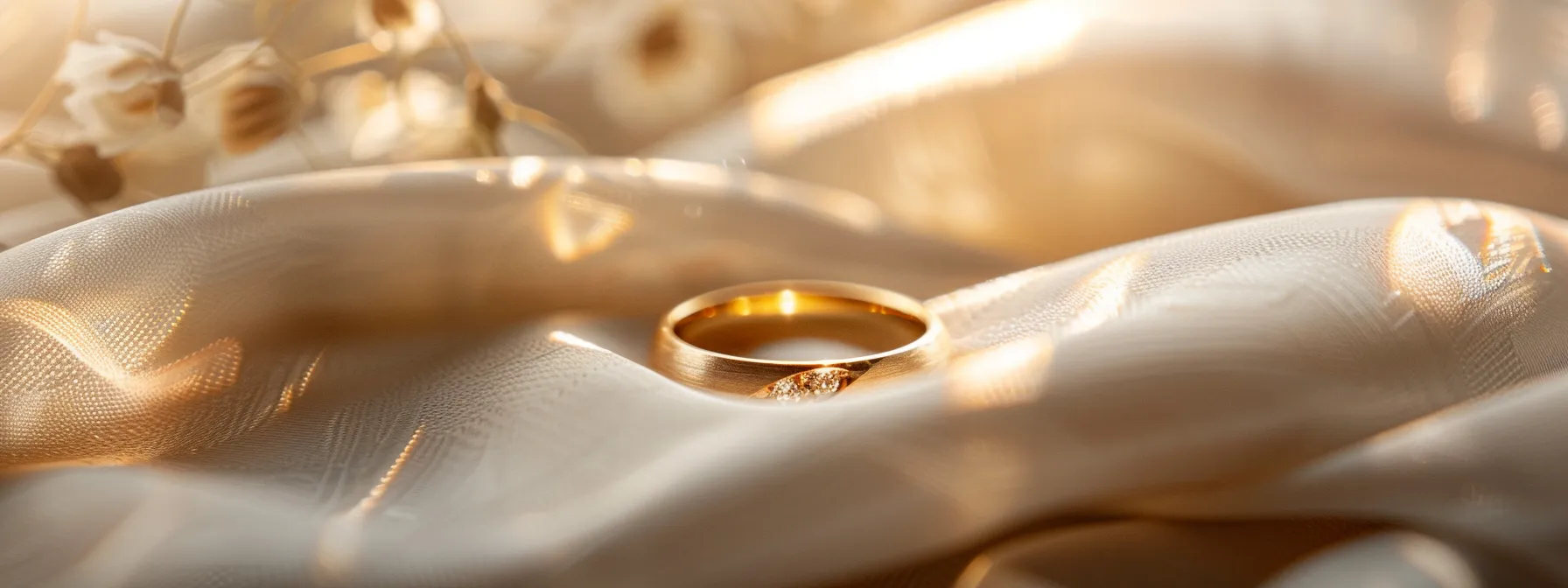
When selecting the perfect classic wedding band, I recommend trying on different styles and sizes to find what feels right for you. Understanding the properties of various metal types, such as gold, titanium, or tungsten, is essential in making an informed choice. Additionally, consider custom sizing options for a unique fit that accommodates your specific finger shape and lifestyle. These practical insights will guide you in making a confident and satisfying selection.
Trying on Different Styles and Sizes
When selecting your classic wedding band, I highly recommend trying on a variety of styles and sizes to see what feels best. Many individuals underestimate the impact that different widths and designs can have on comfort and fit. For instance, I’ve seen clients prefer a slightly larger size in a wider band than they would in a slimmer style, simply because of how the ring sits on their finger. This hands-on approach can help you understand the nuances of each option and ensure your choice aligns with both your comfort and aesthetic preferences.
Furthermore, experimenting with different materials is crucial in this process. I've noticed that some clients gravitate towards titanium for its lightweight feel, while others prefer the rich warmth of gold. Each metal behaves differently, which can affect how the ring feels on your finger throughout the day. I always encourage trying on rings of various materials alongside styles to gain a true sense of how they complement your personal style and lifestyle needs. This way, you'll not only find the right fit but also a classic wedding band that you’ll cherish for years to come.
Considering Metal Types and Their Properties
When choosing a classic wedding band, the type of metal you select significantly impacts both durability and comfort. For instance, gold offers a traditional appeal but can be softer than other materials, which means it may scratch more easily. In contrast, tungsten is known for its exceptional hardness, making it ideal for those who lead active lifestyles or work in demanding environments. Understanding these properties helps you make a decision that aligns with your personal style and daily activities.
Different metals also come with distinct weights and finishes that can influence how a ring feels on your finger. I find that titanium is lightweight and offers an incredible strength-to-weight ratio, while stainless steel provides an affordable yet durable option. The finish of the metal, whether polished or brushed, can also affect not only the appearance but how it interacts with your skin and other rings you might wear. Considering these factors ensures that your classic wedding band isn't just a symbol of commitment but also a comfortable accessory to wear every day:
- Gold: Offers a timeless look but can be softer and more prone to scratches.
- Tungsten: Very hard and ideal for active lifestyles.
- Titanium: Lightweight and durable, great for everyday wear.
- Stainless Steel: Affordable and resilient, perfect for budget-conscious buyers.
Custom Sizing Options for Unique Fits
Custom sizing options for classic wedding bands are vital for those seeking a perfect fit that caters to individual unique needs. Many jewelers offer bespoke services that allow you to specify measurements based on your finger shape and characteristics. For instance, if your fingers are slightly tapered or have wider knuckles, a custom band can ensure comfort and security throughout the day.
Some stores even provide the option to create a band from scratch, allowing for adjustments in width, thickness, and even design elements. This personalized approach not only enhances your comfort but also caters to your lifestyle, which is especially important for active individuals. Custom sizing ensures your wedding band becomes a cherished symbol of your commitment that fits seamlessly into your everyday life:
- Assess your unique finger shape to identify sizing needs.
- Explore jeweler options for bespoke or customized wedding bands.
- Consider adjustments for width and thickness based on personal comfort.
Selecting the perfect classic wedding band is just the beginning. Now, let's explore how to adjust and resize your ring to ensure the perfect fit for years to come.
Adjusting and Resizing Your Classic Wedding Band
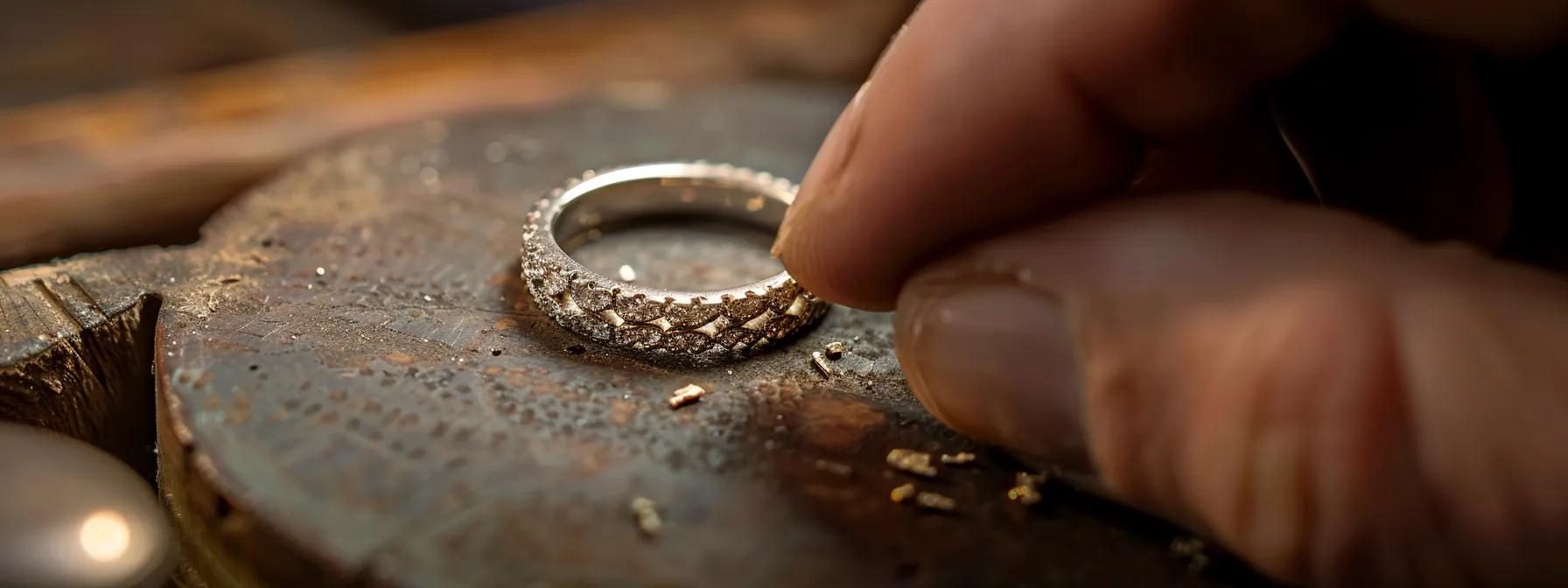
Adjusting and Resizing Your Classic Wedding Band
Resizing your classic wedding band may become necessary if your finger size changes due to factors like weight fluctuations or temperature variations. I’ll discuss the limitations that materials and designs impose on resizing, and highlight how to maintain the integrity of your band during adjustments. These insights will guide you in making sound decisions for your cherished piece of jewelry.
When Resizing Becomes Necessary
Resizing your classic wedding band may become necessary due to various factors, such as weight fluctuations or seasonal changes in temperature. I’ve observed that many clients experience changes in their finger size throughout the year, which can affect how the ring fits and feels. Being proactive about monitoring these changes ensures your wedding band remains a comfortable and secure symbol of your commitment.
Additionally, circumstances such as pregnancy or health changes can also impact your ring size, making resizing essential. I recommend visiting a local jeweler if you notice discomfort or if your ring feels too tight or too loose. A professional can assess the situation and determine whether your band can be resized effectively while maintaining its integrity and design.
Resizing Limitations Based on Design and Material
When it comes to resizing your classic wedding band, the design and material can significantly affect how much alteration is possible. For instance, certain metals like tungsten and titanium present challenges when resizing due to their hardness. I've seen cases where intricate designs, such as those with gemstones or unique patterns, may limit how much a band can be resized without compromising its overall integrity or aesthetics.
Additionally, softer materials like gold and silver generally allow for a more straightforward resizing process, but excessive resizing can still weaken the structure of the ring over time. In my experience, it's important to consult with a professional jeweler who can evaluate the specific design and metal composition of your wedding band. This ensures you receive the best advice on how to approach resizing while preserving the beauty and durability of your cherished piece.
Maintaining the Integrity of Your Band During Adjustments
When adjusting or resizing your classic wedding band, preserving its integrity is paramount. I always advise clients to work with a qualified jeweler who understands the specific material of the ring, whether it's gold, titanium, or tungsten. The resizing process can vary greatly based on the metal’s properties, so ensuring the jeweler has experience with your ring type will help maintain its beauty and durability for years to come.
Additionally, I recommend discussing the design of your band before any adjustments are made. Rings with intricate details, gemstones, or unique patterns can be more challenging to resize effectively without losing their original charm. By conveying your concerns and preferences to the jeweler, you help safeguard your ring's integrity, ensuring that it remains a cherished symbol of your commitment that reflects your personal style.
Conclusion
In summary, understanding classic wedding band sizes is vital for ensuring comfort and style throughout your life. Accurate measurements, awareness of international sizing standards, and consideration of band widths and materials enable you to make informed decisions. Emphasizing the significance of professional fitting services and the potential for custom sizing will help you find the perfect ring that complements your personal style. Ultimately, investing time in selecting the right size creates a lasting symbol of your commitment, making your wedding band a cherished part of your daily life.

